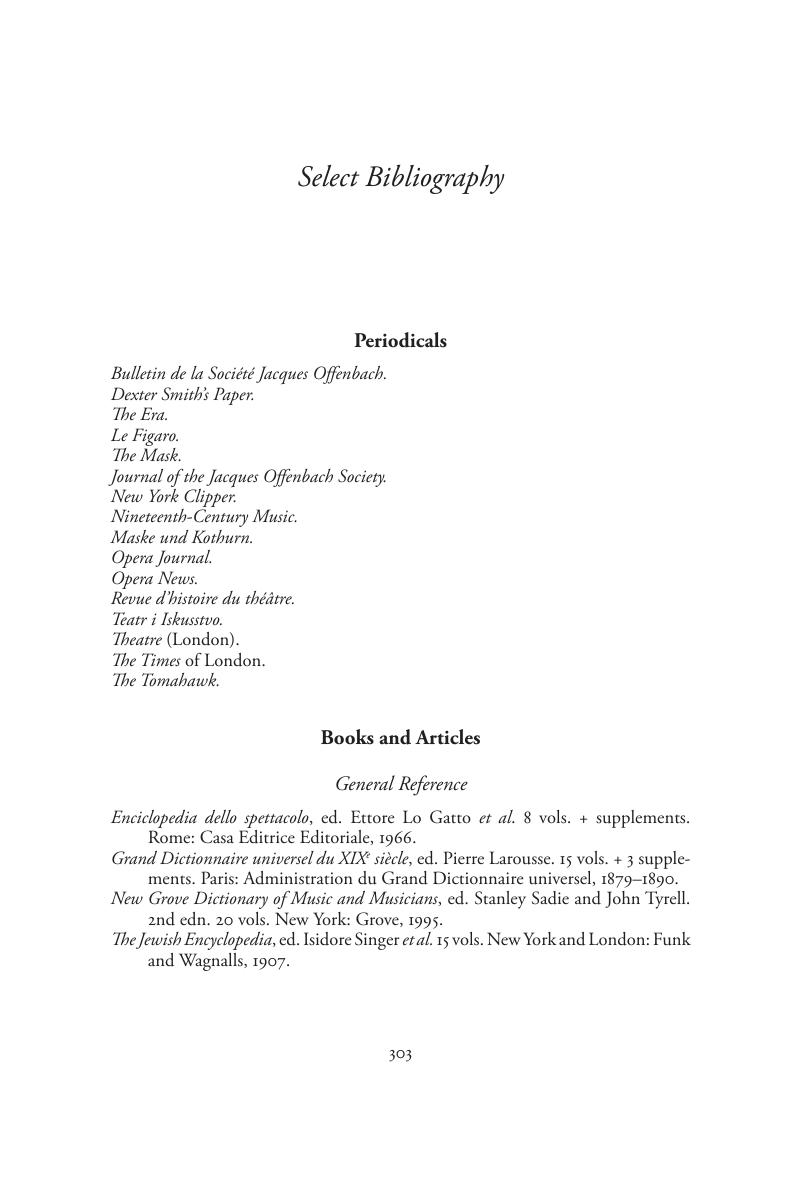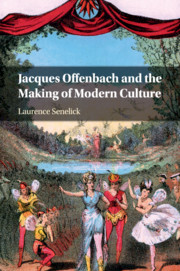Book contents
- Jacques Offenbach and the Making of Modern Culture
- Frontispiece
- Jacques Offenbach and the Making of Modern Culture
- Copyright page
- Dedication
- Contents
- Illustrations
- Foreword and Acknowledgments
- Introduction
- Chapter 1 The French Connection
- Chapter 2 Wagner, Nietzsche, and the Polemics of Opera
- Chapter 3 Tales from the Vienna Stage
- Chapter 4 Against the Victorian Grain
- Chapter 5 The Discovery of America
- Chapter 6 Caviar with the Champagne
- Chapter 7 Doing the Continental
- Chapter 8 South of the Equator, East of Suez
- Chapter 9 A Max Reinhardt Production
- Chapter 10 Red Stars
- Chapter 11 French without Tears
- Chapter 12 English As She Is Spoke
- Chapter 13 Rebirth from the Ruins
- Chapter 14 Conclusion: Taking Offenbach Seriously
- Select Bibliography
- Index
- References
Select Bibliography
Published online by Cambridge University Press: 21 September 2017
- Jacques Offenbach and the Making of Modern Culture
- Frontispiece
- Jacques Offenbach and the Making of Modern Culture
- Copyright page
- Dedication
- Contents
- Illustrations
- Foreword and Acknowledgments
- Introduction
- Chapter 1 The French Connection
- Chapter 2 Wagner, Nietzsche, and the Polemics of Opera
- Chapter 3 Tales from the Vienna Stage
- Chapter 4 Against the Victorian Grain
- Chapter 5 The Discovery of America
- Chapter 6 Caviar with the Champagne
- Chapter 7 Doing the Continental
- Chapter 8 South of the Equator, East of Suez
- Chapter 9 A Max Reinhardt Production
- Chapter 10 Red Stars
- Chapter 11 French without Tears
- Chapter 12 English As She Is Spoke
- Chapter 13 Rebirth from the Ruins
- Chapter 14 Conclusion: Taking Offenbach Seriously
- Select Bibliography
- Index
- References
Summary

- Type
- Chapter
- Information
- Jacques Offenbach and the Making of Modern Culture , pp. 285 - 302Publisher: Cambridge University PressPrint publication year: 2017



